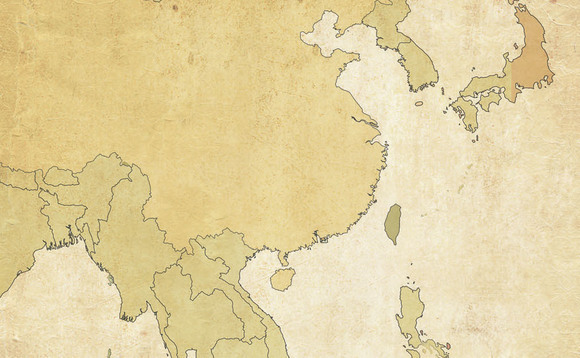
Asia Pacific: No longer far away

Despite predictions by some forward-looking industry figures that China may move ahead to supplant the US within a couple of generations as the world’s biggest private equity market, the US remains the fulcrum of global private equity.
At the height of the 2007 bull market, it accounted for 71% of global private equity investment and 65% of funds raised. According to the Private Equity Council, the US hosts 1,824 of the 2,560 private equity firms worldwide. However much progress the Asian private equity industry has made, the US is still the benchmark; but with the economy of more advanced regions faltering, what promise does Asia hold for investors accustomed to playing it safe at home?
Macro factors
To begin with, the US is recovering from the depths of the GFC. With employment rising again such that one million more Americans were employed in May 2010 than a year ago, and the Federal Reserve expected to raise interest rates into 2011, forecasts point to probable US GDP growth of just over 3% in 2010. Even the drag effect of the European sovereign debt crisis is not expected to impede this recovery.
China, in contrast, is already reporting GDP growth of around 9.5% in 2010, with GDP rising almost 12% in 1Q10. This is the fastest y-o-y growth in China since 2007. At the start of 2010, the International Monetary Fund was predicting economic growth for India of 7.7%, with some government bodies now targeting 8%+ for the year. The latest United Nations' World Economic Situations and Prospects report for 2010 likewise pins its overall 3% forecast for global economic growth in 2010 to the strong performance of economies in Asia.
All the same, a slow-recovering US domestic economy is still a strong draw for LPs shaken by the GFC and looking for safer risk-adjusted returns. However subjective the risk premiums applied to investing in Asia, GPs here still need to make their case for a move out of the (Western) markets they know and understand.
Asian propositions for US investors
Secondary opportunities in 2008-09 already had North American funds and LPs looking at opportunities to profit at home. Asia Pacific, however strong its macro story, still needs to present a persuasive argument, particularly as fundraising is still an exercise in humility and LPs are ever-more selective in their commitments.
"During the next several years, opportunities for private equity fund-type investment in many Asian countries are reasonably likely to enable US private equity investors to earn superior risk-adjusted returns vs. returns in the US," avers Joseph W. Ferrigno III, Managing Partner at Asia Mezzanine Capital Group (AMCG) Hong Kong. "Well-selected and structured direct investments in Asian businesses are generally less highly leveraged and can benefit from stronger economic growth."
"Growth is currently more durable in Asia, given the starting point," confirms Thomas Smith, MD at Lombard Investments. "On a domestic demand level, we see the emergence and dramatic growth of consumer-oriented business that are taken for granted in the US."
Proponents of Asia Pacific private equity can in some cases point to long pedigrees advocating the region before its recent post-GFC popularity. "We have been advocates fundamentally since the Asian currency crisis," says Rob Petty, Managing Partner and co-founder at Clearwater Capital. "The breadth, sophistication and manager sophistication of the Asian alternatives market has grown rather considerably."
Maarten Ruijs, Managing Partner and CIO with CVC Capital Partners in Asia Pacific, summarizes that, "the differences that Asian private equity markets offer to US investors compared to US markets are threefold. In general, the Asian economies, although connected to the US, have different economic cycles, which provide for diversification … Secondly the Asian private equity market is only (realistically) ten years old, and so is still small compared to the Asian economies … Finally, Asian private equity invests in economies in different stages of development – which is not the case in the US, which is more homogeneous."
Even Australia and New Zealand's mature Western-style economies present strong risk-adjusted returns, diversification, and forecast growth of some 3%, notes Paul Shaw, Director of Pacific Equity Partners.
Some private equity professionals here see Asia's macro contribution to the US as very significant indeed. "Most economists believe that the higher growth of Asian economies will continue, and will tend to reduce costs of production and enable US consumers to maintain their standard of living, in spite of the effects of the GFC," says Ferrigno.
Growth versus diversification
The argument for US investors to commit to Asia has two main drivers: the region's macro growth story – and underexposure by many Western investors – but also, portfolio diversification. The latter can distract investors from focus on performance, but in Asia at least, there is strong evidence that diversification has yielded immediate results post the GFC.
"The first and very commonly cited obvious example after 25 years of growth in China and across Asia is the growth opportunity," says Petty. "But it's not only that big-picture growth: it's diversification, diversification, diversification." Echoes Ferrigno, "Many US investors believe that allocating a portion of their private equity portfolio to Asian funds is necessary today purely for the benefits of diversification."
However, diversification is about more than a simple geographical or regional macro play. As Petty explains, "Diversification is a more important criterion in the world today than just from an asset class criterion, but actually from a currency criterion. US investors historically haven't thought a great deal about currency diversification, while in Europe it's probably the first thing that people think about."
In this view, investing in Asia allows participation in rising currencies driven by the underlying macro growth. To this, Petty adds diversification of regulatory regime – "an important factor, as we see regulatory change" – as well as a correction for the historic under-allocation by Western investors to the region. "If you look at Western portfolios today their exposure to Asia, weighted on a GDP exposure or capital markets weighting exposure, is still underweight," he confirms.
Nuts and bolts of the proposition
Of course, private equity ultimately comes down to investing in companies, dictated by the long-term bets on industry and macro trends. Here, GPs are quick to point out the specific opportunities.
Ruijs asserts that the relatively underdeveloped state of Asia Pacific private equity compared to the industry in the US allows for "buying companies in private transactions at attractive valuations." Although he concedes that, "as markets grow, this will diminish," he maintains that, across the region, "currently this still is the case for most markets."
Smith sees the opportunity going even further, in helping Asian portfolio companies to expand into the West. "For years, US acquisitions have been of keen interest to Asian GPs, SWF and Asian operating companies; although the hurdles are high and obvious -- distance, culture, staffing, politics and competing priorities," he notes. Capable private equity investors, he believes, can help overcome these hurdles, and deliver the fruits of the process to LPs.. Shaw sees similar opportunities for PEP investees: "Operating companies have identified positive growth opportunities in the US market."
And Petty points out that, in the face of recurrent LP complaints about low or patchy returns from the region, "the fact remains that there are still real realized returns across Asian portfolios. It is no longer simply theoretical. You can actually go through top quartile and top decile managers, and see realized returns on funds."
Brand value and Asia investing
One recurrent debate in Asia Pacific is the value of brand-name funds for LPs versus independent or homegrown private equity groups, when trying to get the best returns out of the market. Advocates of brands point to the importance of tried-and-tested global best practice in a firm's foundations, not to mention networks of industry contacts and expertise Proponents of the independent approach point, more critically, to team stability and deal performance issues in Asia for even the best-known brand names.
"Committing through larger/brand name groups prevents issues of risk control and adherence to the partnership agreement, where smaller, less experienced groups are going through a learning curve," affirms Ruijs.
Smith, meanwhile, asserts, "It's not the brand; it's the people on the ground who make the difference. Broad experience, time commitment, personal reputation, cultural understanding, creativity, [the] ability to add value in challenging settings; these are the key factors that generate profits and are – or should be – on US LPs' checklists." However, few would argue with Ruijs's point that, "obviously it makes a difference if a GP is part of an organization with 20-years investment experience."
Ferrigno presents both sides of the argument. "Lesser-known funds run by experienced investment professionals tend to be more successful as their motivation and commitment levels tend to be higher. However, there are some brand-name firms that have teams managing country and regional funds that are highly capable and committed."
Asia Pacific private equity still has substantial maturation that needs to take place, but US LPs should not ignore the fact that today there is a decade or 12 years of substantial development of manager skill sets. The industry now has a sophisticated enough pedigree to present solid firms, and even brands, of its own.
Latest News
Asian GPs slow implementation of ESG policies - survey
Asia-based private equity firms are assigning more dedicated resources to environment, social, and governance (ESG) programmes, but policy changes have slowed in the past 12 months, in part due to concerns raised internally and by LPs, according to a...
Singapore fintech start-up LXA gets $10m seed round
New Enterprise Associates (NEA) has led a USD 10m seed round for Singapore’s LXA, a financial technology start-up launched by a former Asia senior executive at The Blackstone Group.
India's InCred announces $60m round, claims unicorn status
Indian non-bank lender InCred Financial Services said it has received INR 5bn (USD 60m) at a valuation of at least USD 1bn from unnamed investors including “a global private equity fund.”
Insight leads $50m round for Australia's Roller
Insight Partners has led a USD 50m round for Australia’s Roller, a venue management software provider specializing in family fun parks.








